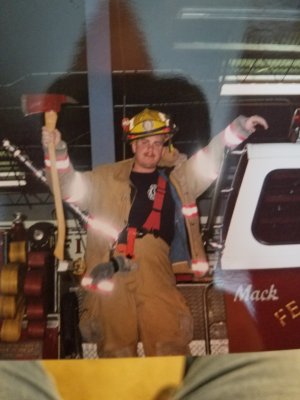Devildoc
Verified Military
@Muppet this article made me think of you and what you do…
Killing of Burnsville first responder an extreme example of growing dangers for Minnesota’s paramedics
The fatal shooting of a Burnsville firefighter while he was tending to a fallen police officer is an extreme example of what Minnesota first-responders describe as an increasingly dangerous profession.
Deaths in the line of duty remain rare, and occur mostly when ambulances crash or medics are hit on roadsides by cars. But state and federal data both point to more injuries as emergency medical technicians and paramedics encounter violence. Forty Minnesota medics suffered violence-related injuries in 2021 and 2022 that were so severe that they missed work or were transferred or had their duties restricted, according to the most recent federal data.
Medics are trained to wait until police officers secure crime scenes and then move in to treat injuries, but seemingly stable scenes can turn dangerous quickly, said Sen. Judy Seeberger, DFL-Afton, a volunteer first-responder for the Lower St. Croix Valley Fire Department. "Sometimes I am on a scene and I can feel things shift, I can feel things change. Maybe something that was safe before becomes unsafe. It's hard when it happens."
A 2022 survey of medics represented by the Hennepin County Association of Paramedics and EMTs in Minneapolis found that 87% reported being affected by violence at work and 78% were assaulted by patients or bystanders on the job. Leaders of the union declined further comment while "full details are unknown and it is important to allow Burnsville and the families involved time to process the situation."
Medics across the world are heartbroken by the shooting, said Dylan Ferguson, director of Minnesota's Medical Services Regulatory Board, which oversees licensing of the state's first responders. "Today and in the days to come, the entire Minnesota EMS community stands shoulder to shoulder with the City of Burnsville during this difficult time as we honor the bravery and selflessness of these fallen heroes."
Veteran firefighter Adam Finseth was killed after a standoff in Burnsville early Sunday morning between police and a man who had barricaded himself in the house with a woman and several children. Finseth was caring for a wounded officer when he came under fire himself. In addition to Finseth, two police officers died and a third was wounded by gunfire.
Finseth was trained as a tactical paramedic, allowing him to embed with SWAT teams and go with them to higher-risk crime scenes so he could respond immediately if injuries occurred. His death might be the nation's first in the 52 years in which these specially trained medics have existed, said Jim Etzin, a Michigan-based consultant who ran a professional tactical EMS association.
"I cannot recall someone whose primary duty or responsibility was to be a medic or a physician on a SWAT team to be killed in the performance of their duties," he said.
Whether such a tragedy will drive more people away from Minnesota's EMS systems is unclear, but the state is already running short of medics — especially in rural parts of the state that are seeing longer wait times in response to their 911 calls for help.
Seeberger co-led a legislative task force that recently toured Minnesota to learn about the EMS shortage and why it is happening. She said most medics are aware from the start that they will be working in stressful and potentially violent situations, and that this risk wasn't cited much as a reason for the growing shortage. Medics routinely receive updated training on assessing "scene safety" in order to maintain their licensure.
However, Seeberger said she suspects violent incidents are contributing to the stress and burnout that many medics did cite in their decisions to give up working or volunteering in their local fire departments.
The threat has always been there. Now it just made the news.

